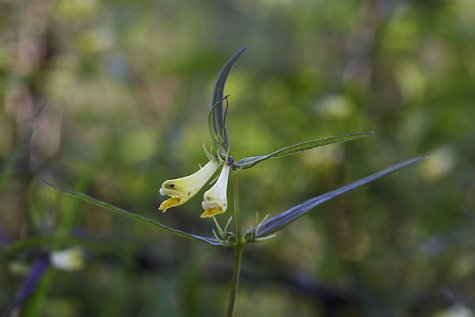New Cameras
Cow-wheats in the forest
Photo: Arne Ader
Translation: Liis
Common cow-wheat
Common cow-wheat Palu-härghein Melampyrum pratense
Small cow-wheat Mets-härghein Melampyrum sylvaticum
The cow-wheats growing in the forest are not as well known as the decorative and familiar wood cow-wheat (Melampyrum nemorosum). Berry-pickers in bilberry forests certainly notice their modest flowers. There are no purple bracts bragging in the tip of the inflorescence as on the wood cow-wheat. The delicate flowers of the common cow-wheat have pale yellow tips and this makes them easily distinguishable from the small cow-wheat with wholly yellow flowers that are larger and about to end their flowering with the month of July. Outside the flowering period, only from the leaves, it is difficult to distinguish the forest-growing cow-wheats.
The cow-wheats are parasites on trees and shrubs, their small root system is well adapted to that. Thus we find the common cow-wheat in sparse forests, always in drier places or on poorer soil; lingonberry plants as well as pines suit as their hosts (the small cow-wheat prefers bilberry plants and spruces). In dry sparse forests they sometimes grow in great abundance, and are particularly noticeable in the beginning of summer but flower nicely until autumn. Each year their habitat is thickly filled with plants, although we have to do with annual plants. As seen the propagation of the cow-wheats by seeds goes without problems, but if the roots of the cow-wheat do not find within a few weeks after germination a host plant from which to steal nourishment by way of the suckling roots fading away is unavoidable.
The seeds of the plant shine, and ants carry them along - - whether it is because they remind of ant’s eggs or because they extrude a little delicious oil - but so they help to spread the plant.
The cow-wheats growing in the forest are rather lush; they are food for birds foraging on the ground: black grouse and capercaillies. In the summer they feed on the leaves, in autumn on the seeds.








